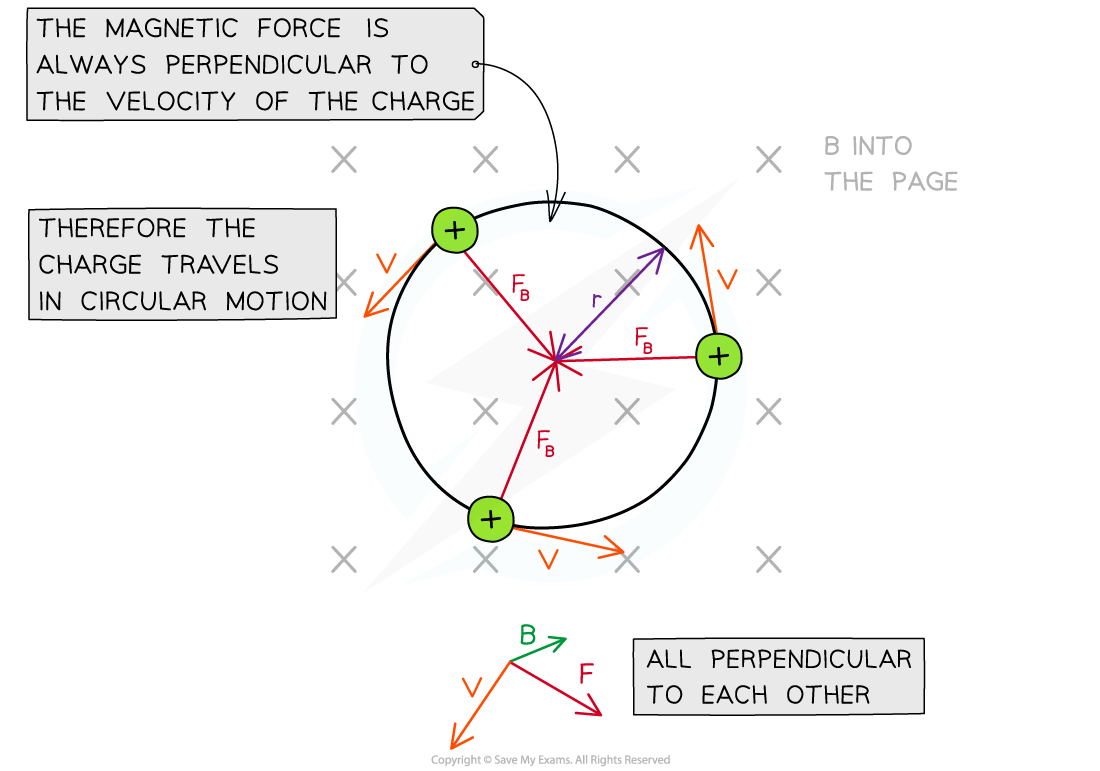Radius of a Charged Particle in a Magnetic Field (Edexcel A Level Physics): Revision Note
Exam code: 9PH0
Radius of a Charged Particle in a Magnetic Field
A charged particle in uniform magnetic field which is perpendicular to its direction of motion travels in a circular path
This is because the magnetic force F is always perpendicular to its velocity v
F will always be directed towards the centre of orbit

A charged particle travels in a circular path in a magnetic field
The magnetic force F provides the centripetal force on the particle
The equation for centripetal force is:

Where:
F = centripetal force (N)
m = mass of the particle (kg)
v = linear velocity of the particle (m s–1)
r = radius of orbit (m)
Equating this to the magnetic force on a moving charged particle gives the equation:

Rearranging for the radius r obtains the equation for the radius of the orbit of a charged particle in a perpendicular magnetic field:

The product of mass m and velocity v is momentum p
Therefore, the radius of the charged particle in a magnetic field can also be written as:
Where:
r = radius of orbit (m)
p = momentum of charged particle (kg m s–1)
B = magnetic field strength (T)
q = charge of particle (C)
This equation shows that:
Particles with a larger momentum (either larger mass m or speed v) move in larger circles, since r ∝ p
Particles with greater charge q move in smaller circles: r ∝ 1 / q
Particles moving in a strong magnetic field B move in smaller circles: r ∝ 1 / B
Worked Example
An electron with charge-to-mass ratio of 1.8 × 1011 C kg-1 is travelling at right angles to a uniform magnetic field of flux density 6.2 mT. The speed of the electron is 3.0 × 106 m s-1.
Calculate the radius of the circular path travelled by the electron.
Answer:

Examiner Tips and Tricks
Make sure you're comfortable with deriving the equation for the radius of the path of a charged particle travelling in a magnetic field, as this is a common exam question.
Crucially, the magnetic force is always perpendicular to the velocity of a charged particle. Hence, it is a centripetal force and the equations for circular motion can be applied.

Unlock more, it's free!
Did this page help you?